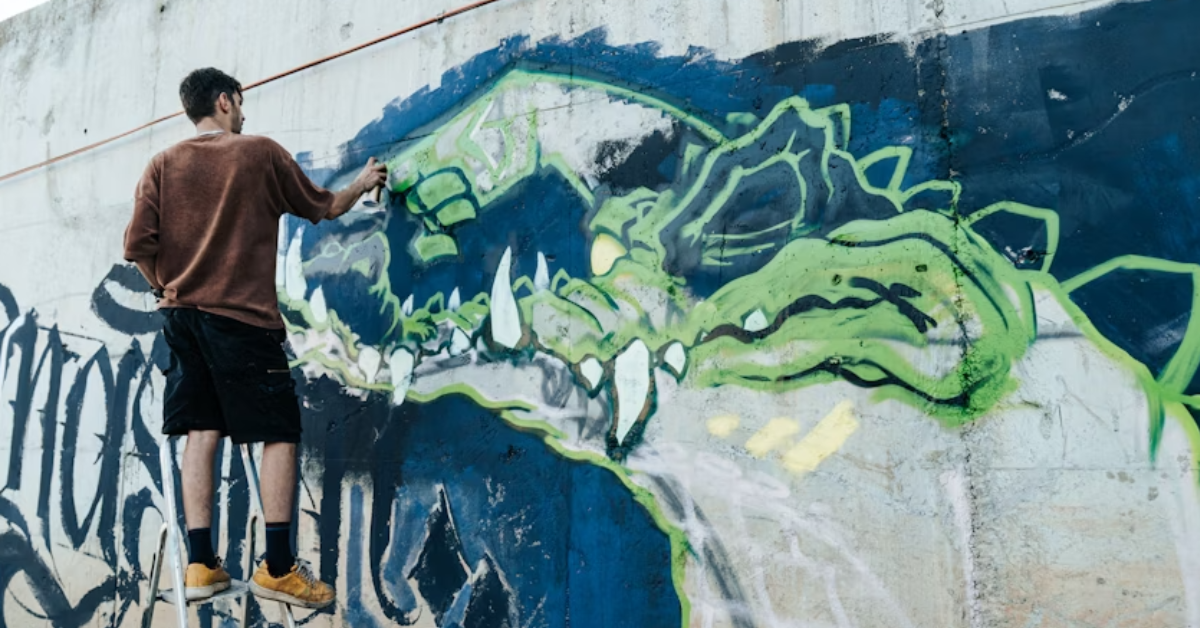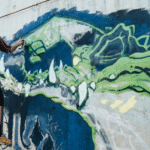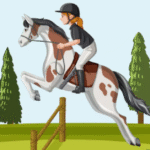Grafitada: The Vibrant Language of Urban Expression
Grafitada is more than paint on walls—it’s a voice, a movement, and a visual form of rebellion turned art. In its essence, grafitada represents the fusion of identity, emotion, and public commentary expressed through street visuals. People searching for “grafitada” often want to understand its meaning, history, and how it evolved from an underground act of protest into a respected artistic genre. Within the first strokes of color lies an emotional code—reflecting society’s struggles, dreams, and contradictions. This article unpacks grafitada in depth, from its cultural symbolism and social influence to its aesthetic diversity and technical artistry. Readers will discover how this art form transcends walls to shape cities, ignite debates, and redefine creativity in public spaces.
Graffiti, or “grafitada” in many Latin-rooted languages, carries a rich history that began not as vandalism but as communication. Early humans used cave walls to depict life and emotion; ancient Romans scribbled messages and drawings on city walls. Over time, grafitada became a social chronicle—stories told in pigment and shape. In the 20th century, particularly across Latin America and urban Europe, grafitada evolved into a means of reclaiming space. Artists used it to confront injustice, celebrate community, or simply leave a mark in a world that often ignored their presence. What was once dismissed as defacement now often earns a place in galleries and public art programs, symbolizing how creativity adapts to both resistance and recognition.
In the modern context, grafitada encompasses more than spray-painted letters or murals—it has absorbed technology, digital design, and even political activism. Street artists today merge traditional pigment with augmented reality, turning static walls into interactive storytelling platforms. Many cities now commission grafitada to revitalize dull urban zones or commemorate social movements. In this evolution, grafitada’s message has matured but never lost its edge; it continues to question authority, celebrate individuality, and beautify decay. As one artist famously said, “A wall is a voice waiting to be heard.” This belief captures why grafitada remains relevant—it’s democracy painted in public view.
The Meaning and Spirit Behind Grafitada
The term “grafitada” comes from the act of engraving or marking surfaces, symbolizing permanence and defiance. Unlike conventional paintings confined to museums, grafitada lives where life happens—on walls, bridges, trains, and tunnels. It mirrors the pulse of the city, responding to its chaos and contradictions. Artists often describe grafitada as a dialogue with the environment. Each piece carries a story, whether political commentary, personal emotion, or abstract beauty. Some view grafitada as rebellion; others call it public poetry. Both are right. It’s an art form that thrives on visibility, daring to exist outside boundaries.
“Art should comfort the disturbed and disturb the comfortable,” said Cesar Cruz, and grafitada exemplifies this truth. In many urban neighborhoods, these murals give a sense of identity where institutional neglect left voids. The beauty of grafitada lies not only in color or form but in purpose—transforming ignored walls into canvases of meaning. For young artists, especially in marginalized areas, grafitada becomes empowerment—an act of visibility in a world that often prefers their silence. This merging of defiance and creativity turns grafitada into a modern folklore etched across the city’s skin.
The Historical Roots of Grafitada
Grafitada’s evolution mirrors humanity’s desire to communicate visually. Its roots stretch from prehistoric cave drawings to ancient political graffiti in Pompeii. By the late 1960s, urban grafitada gained recognition in cities like New York, São Paulo, and Mexico City. It was the era of expression against inequality, authoritarianism, and war. Spray paint became both a tool and a weapon—each tag a declaration of existence. What separated grafitada from mere vandalism was its artistry and intention. Early grafitadores created complex calligraphic tags and murals infused with social meaning, setting the stage for an art revolution.
In Latin America, grafitada became a chronicle of political struggle. Chilean artists during Pinochet’s dictatorship painted slogans of resistance on walls; Brazilian muralists turned favelas into vibrant storybooks. In Europe, Berlin’s wall became a monumental canvas of freedom after its fall. These historical footprints remind us that grafitadas has always been a mirror reflecting cultural and political shifts. As cities evolve, grafitadas captures these transformations, turning everyday surfaces into living archives of collective memory.
The Techniques and Tools of Grafitada
Creating grafitadas requires both skill and strategy. It’s not random paint splatter—it’s planned design meeting spontaneous energy. Artists employ different techniques, including stenciling, freehand spraying, wheat-pasting, and mixed-media layering. Each style conveys a unique mood. Stencils, for instance, offer precision and repetition, while freehand allows emotional flow. Color selection, gradient blending, and line sharpness determine the impact of a piece.
Below is a table outlining key techniques used in grafitada creation:
| Technique | Description | Artistic Impact |
|---|---|---|
| Freehand Spray | Direct hand control with spray paint | Expressive, fluid, emotionally charged |
| Stenciling | Design cut-outs used for uniform shapes | Clean, repeatable, politically strong |
| Wheat-Pasting | Paper or posters glued on surfaces | Temporary, message-oriented |
| 3D Effects | Layered shading for depth illusion | Modern, visually captivating |
| Digital Projection | Light-based visual mapping | Interactive, tech-driven creativity |
Master grafitadores blend these methods, often experimenting with unconventional materials like chalk dust, LED light, or even recycled trash. Their creativity turns neglected corners into art hubs. For instance, artists in Lisbon’s Bairro Alto use rusted metal panels as canvases to merge decay with beauty. This inventive spirit keeps grafitadas dynamic, constantly reinventing itself in response to changing urban textures.
The Social and Cultural Impact of Grafitada
Grafitada’s influence extends far beyond visual aesthetics—it shapes social identity and conversation. In many cities, murals act as public dialogue spaces, expressing the community’s values, frustrations, and dreams. It democratizes art by taking it outside elitist institutions. A passerby, not a gallery visitor, becomes the audience. Through this accessibility, grafitada inspires connection among people who might otherwise feel alienated.
Sociologists often view grafitadas as a cultural thermometer, measuring a city’s freedom of expression. Where grafitada thrives, creativity and civic openness often flourish. Conversely, in regions where it’s criminalized, grafitadas becomes an underground act of defiance, symbolizing suppressed voices. “Every wall painted is a wall reclaimed,” said one anonymous artist, capturing grafitada’s essence as resistance. Whether beautifying neglected districts or commemorating lost lives, grafitada bridges emotion and activism in powerful ways.
Grafitada in the Digital Age
Technology has transformed how grafitada’s created, shared, and preserved. Artists now use digital tools to sketch designs before execution, experiment with color palettes, or simulate placement using augmented reality. Platforms like virtual galleries allow audiences to view street art from across the world. Drones capture aerial perspectives, and NFTs have enabled grafitadores to sell digital versions of their works without losing authenticity.
The fusion of graffiti and digital innovation gave rise to “cyber grafitada”—animated murals projected on buildings or interactive installations that respond to motion or sound. This modern approach extends grafitada’s lifespan, overcoming weathering and legal constraints. More importantly, it keeps the rebellious spirit alive in virtual form, where censorship struggles to follow. The internet has effectively globalized grafitadas, turning local acts of expression into international conversations.
Table: Evolution of Grafitada Through Time
| Era | Key Characteristics | Social Role |
|---|---|---|
| Ancient & Classical | Wall carvings, cave symbols | Communication, ritualistic |
| Mid-20th Century | Spray paint emergence | Protest, rebellion |
| Late 20th Century | Artistic recognition grows | Cultural identity |
| Early 21st Century | Urban beautification projects | Community building |
| Digital Era | Virtual & AR grafitada | Global storytelling |
This progression shows grafitada’s remarkable adaptability. From primitive carvings to digital projections, it remains the people’s art form—public, provocative, and profoundly human.
Grafitada and Urban Renewal
City planners increasingly recognize grafitada’s potential in revitalizing public spaces. Once seen as a nuisance, murals now attract tourism and stimulate local economies. Districts like Bogotá’s La Candelaria or Berlin’s Kreuzberg showcase grafitadas as cultural identity, blending creativity with economic purpose. Urban renewal projects commission grafitadores to decorate abandoned buildings, underpasses, and school walls, turning them into safe, colorful landmarks.
The psychology of color also plays a role here. Studies show that vibrant hues in grafitada can reduce perceptions of urban decay, foster positivity, and even deter vandalism by promoting community ownership. This merging of aesthetics and psychology highlights grafitada’s subtle power—it beautifies while it communicates. In modern cities, grafitadas acts as both a mirror and a mediator, reflecting social truth while nurturing urban resilience.
The Ethical and Legal Dimensions
Grafitada exists in a delicate balance between art and illegality. Many artists work without permission, driven by urgency and expression rather than legality. Others collaborate with municipalities to create authorized murals. This dual identity fuels debate: when does grafitadas cross from freedom to defacement? The answer often lies in context and intention. When it speaks meaningfully, grafitadas earns respect; when it harms property, it invites controversy.
Regulation varies globally. Some countries embrace grafitadas festivals and allocate “open walls,” while others impose fines or jail terms. Yet, even where laws are strict, grafitada persists—it adapts, hides, evolves. It proves that art born from emotion cannot be silenced by legislation. As one muralist expressed, “The wall is not mine, but the message is everyone’s.”
Grafitada as Emotional Expression
Every grafitada tells a story. Beyond colors and patterns lies emotion—anger, joy, nostalgia, or hope. Artists translate their inner worlds into urban imagery, making the invisible visible. Unlike traditional art that seeks permanence, grafitadas accepts impermanence; weather and repainting erase it, but the message lingers. This transience adds poignancy—it’s beauty born to fade, yet remembered vividly.
Grafitada’s emotional language also shapes how communities heal. In cities scarred by violence or disaster, murals often serve as collective therapy. They memorialize loss and inspire resilience. A single painted face can hold more truth than speeches or policies, reminding passersby of shared humanity. This emotional depth cements grafitada’s place as both art and activism.
Grafitada Around the World
While rooted in Latin cultures, grafitada’s reach is now global. In Tokyo, grafitada fuses anime aesthetics with urban abstraction. In New York, it’s synonymous with hip-hop culture. In Cape Town, it narrates post-apartheid stories. Each region interprets grafitadas differently, yet all share its essence—expression in defiance of silence. This cultural universality cements grafitada as one of the most significant visual movements of our age.
Interestingly, grafitada has also entered academia, design, and fashion. Universities analyze its semiotics; brands borrow its energy for campaigns; museums host grafitadas retrospectives. These shifts signal how a once-outlawed practice now shapes mainstream creativity without losing its authenticity.
The Future of Grafitada
As technology and social awareness expand, grafitada’s future looks even more multidimensional. It will merge more deeply with sustainability, community activism, and digital interactivity. Artists may soon use eco-friendly pigments or solar-reactive surfaces that change with light. Virtual grafitada spaces will preserve works indefinitely. But its essence will remain unchanged: grafitada will continue to express what words cannot, standing as the mural of humanity’s ongoing story.
Conclusion
Grafitada began as an act of rebellion and became a universal language of expression. Its journey from forbidden art to celebrated form mirrors society’s shifting understanding of creativity and freedom. Today, grafitadas bridges communities, beautifies cities, and tells truths that institutions often ignore. It is the art of the people—raw, loud, and sincere. “Walls speak when people listen,” as one mural in Buenos Aires declares, and grafitadas ensures that those voices never fade.
FAQs
1. What does the word “grafitada” mean?
Grafitada refers to the act or result of creating graffiti—artistic markings, paintings, or inscriptions made on public surfaces, often conveying personal or social messages.
2. Is grafitada considered legal art?
Legality depends on location. Some cities support authorized murals, while others classify grafitada as vandalism. Its perception varies by cultural and political context.
3. What distinguishes grafitada from traditional graffiti?
While both share origins, grafitada often carries stronger cultural and artistic intent, blending social storytelling with visual sophistication.
4. How has digital technology influenced grafitada?
Technology enables artists to plan, project, and share work globally. Digital grafitada includes AR murals, virtual exhibitions, and NFT art pieces.
5. Why is grafitada important in modern society?
Grafitadas democratizes art by placing creativity in public view. It reflects identity, resists oppression, and beautifies urban spaces with meaningful expression.











